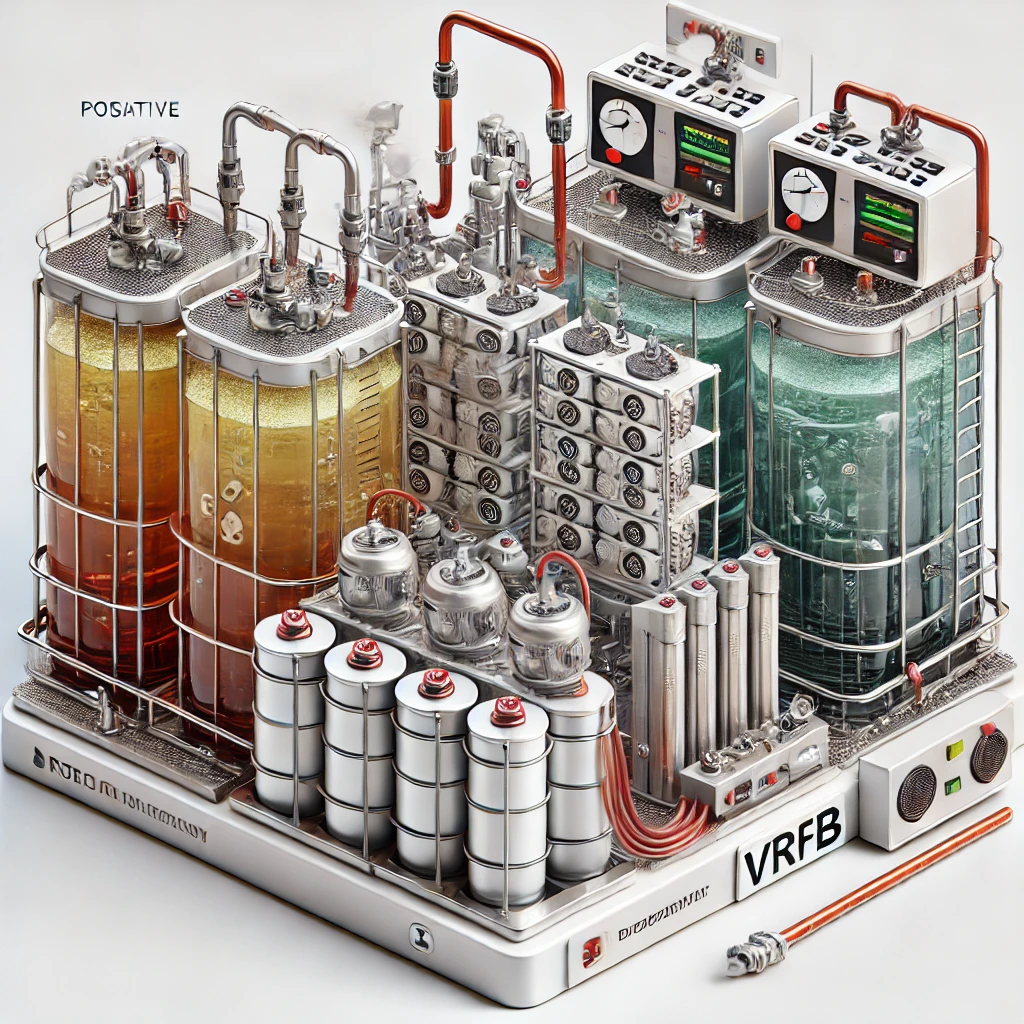Vanadium Redox Flow Batteries: The Future of Sustainable Energy Storage

As the world transitions to renewable energy, reliable energy storage systems are essential for balancing intermittent supply and demand. One standout innovation is the Vanadium Redox Flow Battery (VRFB), a large-scale energy storage technology offering durability, scalability, and sustainability. Here’s why VRFBs are gaining attention in the energy industry.
What is a Vanadium Redox Flow Battery?
A VRFB is a rechargeable battery that uses liquid electrolytes containing vanadium ions to store energy. Unlike conventional batteries, it separates energy capacity (the size of the tanks) from power capacity (the size of the electrochemical stack), making it highly adaptable for large-scale applications like grid storage.
How Does It Work?
The battery consists of two tanks filled with vanadium electrolytes in different oxidation states. These electrolytes are pumped through a central electrochemical cell stack, where redox reactions (reduction and oxidation) occur to charge or discharge the battery. A key feature is the use of vanadium for both the positive and negative sides, reducing the risk of contamination and extending the battery's lifespan.
Why VRFBs Stand Out
- Longevity: With lifespans of over 20 years and minimal degradation, VRFBs outperform many other batteries.
- Safety: Unlike lithium-ion batteries, VRFBs are non-flammable and operate at ambient temperatures.
- Scalability: Energy storage capacity can be increased simply by enlarging the tanks, making VRFBs perfect for grid and industrial use.
- Sustainability: The electrolytes are reusable, aligning with global efforts to reduce waste and promote a circular economy.
Applications of VRFBs
- Renewable Energy Support: VRFBs store excess solar and wind power for later use, ensuring a consistent energy supply.
- Grid Stability: They provide backup power and frequency regulation, critical for maintaining reliable electricity networks.
- Microgrids: Ideal for remote areas and off-grid communities needing long-duration energy storage.
Challenges and Future Potential
Despite their advantages, VRFBs face challenges, including:
- High Initial Costs: Vanadium is expensive, and the systems require significant upfront investment.
- Bulky Design: The tanks and pumps require more space compared to other battery types
Latest

Envisioning the Future: The Impact of 6G Technology on a Hyper-Connected World
As the world continues to embrace the transformative capabilities of 5G, the next frontier in wirele...read more

The Wizpr Ring: Revolutionizing Smart Wearable Technology
In the ever-evolving world of wearable technology, the Wizpr Ring stands out as a groundbreaking inn...read more

Cozmo Robot: The Perfect Holiday Toy and Educational Christmas Gift for Children
This Christmas, give your child a gift that is as entertaining as it is educational, like one of the...read more
Latest

Envisioning the Future: The Impact of 6G Technology on a Hyper-Connected World
As the world continues to embrace the transformative capabilities of 5G, the next frontier in wirele...read more

The Wizpr Ring: Revolutionizing Smart Wearable Technology
In the ever-evolving world of wearable technology, the Wizpr Ring stands out as a groundbreaking inn...read more

Cozmo Robot: The Perfect Holiday Toy and Educational Christmas Gift for Children
This Christmas, give your child a gift that is as entertaining as it is educational, like one of the...read more

Vanadium Redox Flow Batteries: The Future of Sustainable Energy Storage
As the world transitions to renewable energy, reliable energy storage systems are essential for bala...read more
